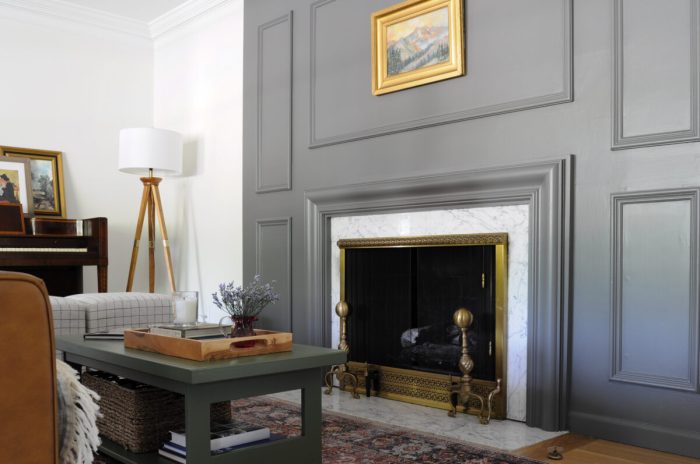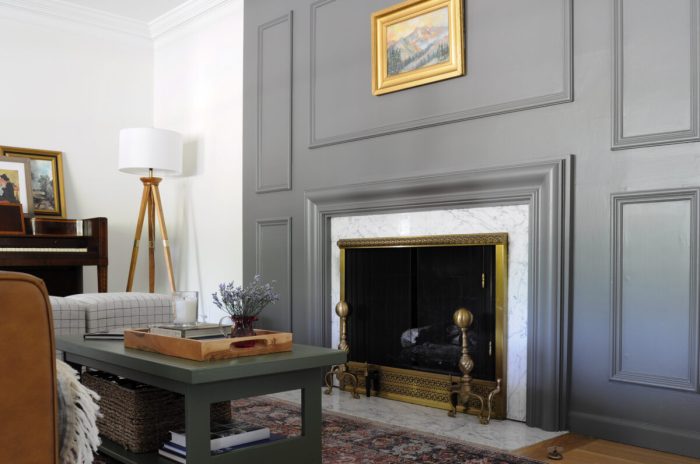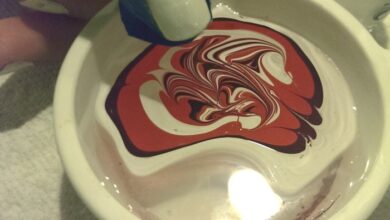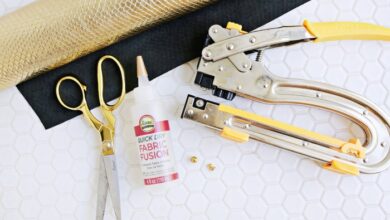
DIY trim accent walls are a fantastic way to add visual interest and personality to any room. They’re a relatively simple project that can transform a bland wall into a statement piece, and you don’t need to be a seasoned DIYer to tackle it.
The possibilities are endless, from classic crown molding to modern geometric patterns. Whether you’re aiming for a cozy farmhouse aesthetic, a sleek minimalist look, or something bold and eclectic, trim can be your secret weapon.
The beauty of trim accent walls lies in their versatility. They can enhance a room’s architectural features, define different areas within a space, or simply add a touch of elegance. You can even use them to create a focal point for your favorite artwork or furniture.
The key is to choose the right trim style and pattern that complements your existing décor and personal taste.
Preparing the Wall

A well-prepared wall is crucial for a successful trim accent wall project. It ensures that the trim adheres properly and creates a clean, professional finish. This involves cleaning the wall, patching any imperfections, and marking the wall for accurate trim placement.
Cleaning the Wall
Before installing the trim, it’s essential to clean the wall thoroughly. This removes dust, dirt, grease, and any other debris that could interfere with the adhesion of the trim.
- Use a damp cloth or sponge with mild detergent to wipe down the wall. Avoid using harsh chemicals that could damage the paint or wall surface.
- Rinse the wall with clean water and allow it to dry completely before proceeding.
Patching Imperfections
Any imperfections on the wall, such as cracks, holes, or uneven surfaces, should be patched before installing the trim.
- For small cracks and holes, use spackling compound or joint compound. Apply it with a putty knife, ensuring it’s smooth and even with the wall surface.
- For larger holes or uneven surfaces, consider using drywall patch or mesh tape. Follow the manufacturer’s instructions for proper application.
- Allow the patching compound to dry completely before sanding it smooth with fine-grit sandpaper.
Measuring and Marking the Wall
Accurate measurements are essential for proper trim placement.
- Use a tape measure to determine the dimensions of the wall and the trim pieces you’ll be using.
- Mark the wall with a pencil or chalk line to indicate the exact location of the trim.
- Use a level to ensure the lines are straight and parallel.
Using Levels and Chalk Lines
Levels and chalk lines are valuable tools for ensuring accurate trim placement.
- A level ensures that the trim is installed straight and level. Place the level along the marked line and adjust the trim until it’s perfectly aligned.
- A chalk line creates a straight line on the wall, making it easier to follow when installing the trim. Snap the chalk line along the marked line to create a visible guide.
Finishing Touches: Diy Trim Accent Wall

Now that your trim is in place and the wall is prepped, it’s time to add the finishing touches. This is where your DIY project truly comes to life! We’ll explore how to apply paint or stain to the trim, achieve a smooth and professional finish, and ensure your new accent wall is protected for years to come.
Applying Paint or Stain, Diy trim accent wall
The choice between paint and stain depends on the look you want to achieve. Paint provides a solid color, while stain allows the wood’s natural grain to show through.
- Paint: Choose a high-quality paint specifically designed for trim work. This type of paint is typically more durable and resistant to scuffs and scratches. Apply thin coats using a brush or roller, ensuring even coverage. Allow each coat to dry completely before applying the next.
- Stain: Opt for a stain that complements the color of your trim and the overall design of the room. Apply the stain using a brush or cloth, following the manufacturer’s instructions. For a darker finish, apply multiple coats, allowing each coat to dry completely before applying the next.
Achieving a Smooth and Professional Finish
To ensure a flawless finish, consider these tips:
- Use a high-quality brush or roller: Invest in a brush or roller specifically designed for painting trim. These tools have a finer bristle or nap, resulting in a smoother finish.
- Apply thin coats: Applying thin coats allows the paint or stain to dry evenly and prevents drips and runs.
- Sand between coats: Lightly sanding between coats helps to create a smooth surface for the next coat. Use fine-grit sandpaper (220-grit or higher) and sand in the direction of the wood grain.
- Clean up spills immediately: Wipe up any spills or drips promptly to prevent them from drying and creating imperfections.
Cleaning and Protecting the Finished Wall
Once your paint or stain has dried completely, it’s important to clean up any excess and protect your new accent wall.
- Clean the area: Use a damp cloth to wipe away any dust or debris. Avoid using harsh chemicals or abrasive cleaners that could damage the finish.
- Apply a sealant: A sealant helps to protect the paint or stain from scratches, scuffs, and spills. Choose a sealant that is compatible with your paint or stain and apply it according to the manufacturer’s instructions.
Adding a DIY trim accent wall can really elevate a room, and while you’re working on that project, why not whip up a batch of delicious caramel in your slow cooker? I’ve been using this amazing recipe from try this crockpot caramel for years, and it’s always a hit.
Once your caramel is ready, you can enjoy it while admiring your beautiful new accent wall.
Adding a DIY trim accent wall is a fantastic way to add visual interest and personality to your space. It’s a project that can be done over a weekend, and you can customize it to match your style. To make the project even more enjoyable, why not treat yourself to a little something special?
Check out brighten up your spring with prezzyboxs fresh gift selection for some inspiration. After all, a little pampering can go a long way when tackling a DIY project. Once you’ve got your tools and supplies, you’ll be well on your way to creating a stunning accent wall that will transform your room.
Adding a DIY trim accent wall can be a fun and rewarding project. It’s a great way to add personality and visual interest to your space, but sometimes you need a little extra something to tie it all together.
That’s where a unique art piece can really make a statement. If you’re looking for something truly special, I highly recommend checking out this stitched photo art project. The delicate details and personal touch of stitching can complement the clean lines of your trim accent wall beautifully, creating a truly unique and cohesive look.






